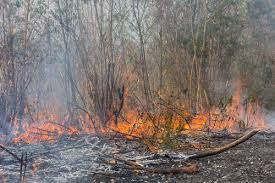The Impact and Recovery from the Miramichi Fire

Introduction
The Miramichi Fire, a significant wildfire that recently swept through New Brunswick, has left an indelible mark on the provincial community and surrounding areas. This environmental crisis is crucial to discuss as it not only highlights the challenges of fire management in the region but also the resilience and commitment of the Miramichi residents in the face of adversity. As wildfire incidents continue to rise due to changing climate patterns, understanding the events surrounding the Miramichi Fire is paramount for future preparedness and recovery efforts.
Details of the Incident
Beginning in late August 2023, the Miramichi Fire sparked amid unusually dry weather conditions and prolonged heat waves. The flames rapidly spread across a broad range of forested areas, prompting immediate evacuations and containment efforts by local fire departments. The New Brunswick Department of Natural Resources reported that over 2,300 hectares were scorched, leading to significant ecological damage and detrimental effects on air quality.
Local authorities collaborated with the Canadian Red Cross to set up emergency shelters for displaced residents. Many families were evacuated from their homes as firefighters worked tirelessly to control the blaze. Over 200 firefighters, supported by air tanker teams, battled the flames for several weeks. Reports indicate that the fire was finally declared under control by mid-September 2023, thanks to favorable weather conditions and relentless efforts from emergency responders.
Community Response and Recovery
In the aftermath of the wildfire, the recovery process began almost immediately. Community members rallied together, providing support to the affected families and offering resources for rebuilding. Local businesses launched initiatives to donate a portion of their earnings to fire relief funds, and a number of local charities coordinated donations of food, clothing, and financial support.
As part of the recovery strategy, residents are encouraged to participate in discussions regarding fire prevention and improving land management practices. Local government officials have also initiated a review of existing protocols to ensure a more effective response to potential future wildfires.
Conclusion
The Miramichi Fire serves as a stark reminder of the impact of climate change on natural disasters and the resiliency of communities faced with tragedy. As the region recovers, it becomes vital to implement strategies that not only address immediate recovery needs but also enhance long-term preparedness for future incidents. With increased awareness and collective effort, Miramichi can emerge stronger, ensuring community safety and resilience against fires in the years ahead.









